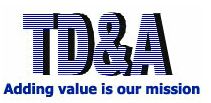1. What is ISO 50001?
ISO 50001 is an international standard developed by the International Organization for Standardization (ISO), designed to support organizations in establishing an effective Energy Management System (EnMS). The main objective of this standard is to help organizations improve energy performance, reduce operating costs, and minimize greenhouse gas emissions — contributing to sustainable development.
2. Objectives of ISO 50001
ISO 50001 provides a structured framework that enables organizations to:
- Understand and control their energy usage;
- Establish appropriate energy policies and objectives;
- Implement continual improvement measures to optimize energy performance.
3. Versions of ISO 50001
- ISO 50001:2011 – First edition, published in June 2011
- ISO 50001:2018 – Current edition, published in August 2018, emphasizing continuous improvement in energy performance
4. Benefits of Implementing ISO 50001
- Cost savings through more efficient energy use
- Reduction in greenhouse gas emissions, supporting environmental protection goals
- Easier compliance with legal and regulatory energy requirements
- Enhanced brand image and credibility with customers, partners, and investors
- Improved internal capabilities in energy management and control
5. Operating Principles
ISO 50001 is based on the Plan–Do–Check–Act (PDCA) management cycle:
- Plan: Establish energy policy, objectives, targets, and action plans
- Do: Implement actions as planned
- Check: Monitor, measure, and analyze energy performance
- Act: Improve the system and performance based on evaluation results
6. Who Can Apply ISO 50001?
ISO 50001 is applicable to all types of organizations — from manufacturing, commercial, and service sectors to governmental and administrative bodies — that seek to manage and use energy more efficiently.

“Clean Energy – Green Actions for a Sustainable Future”

